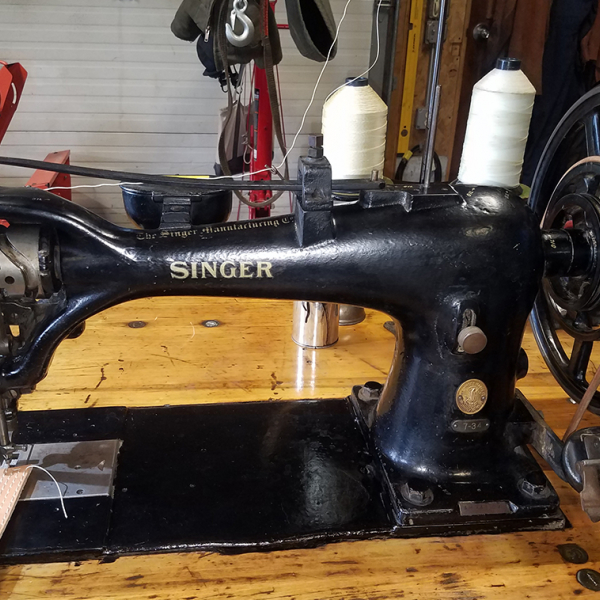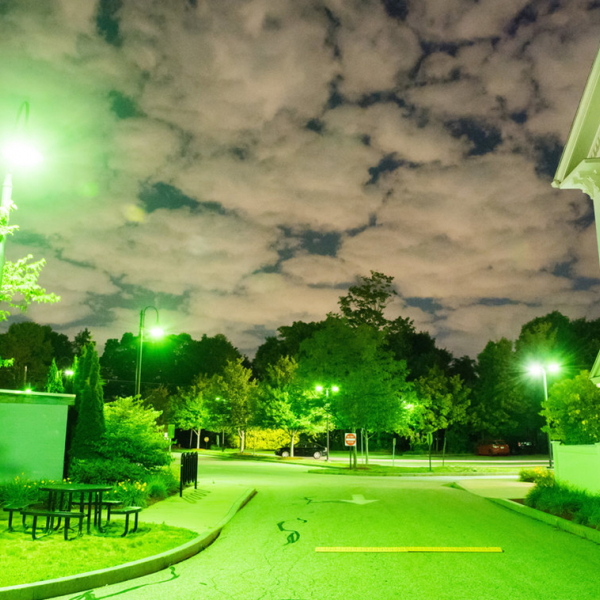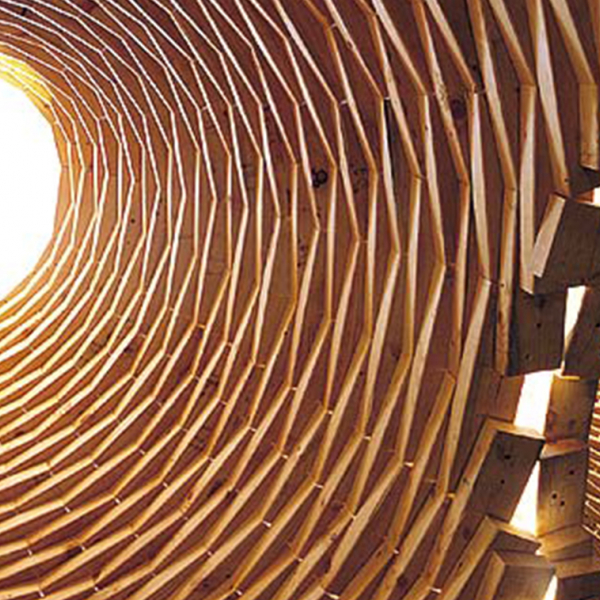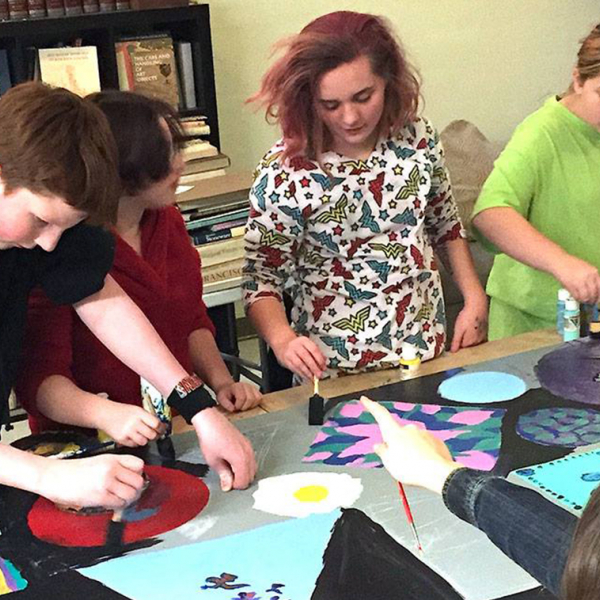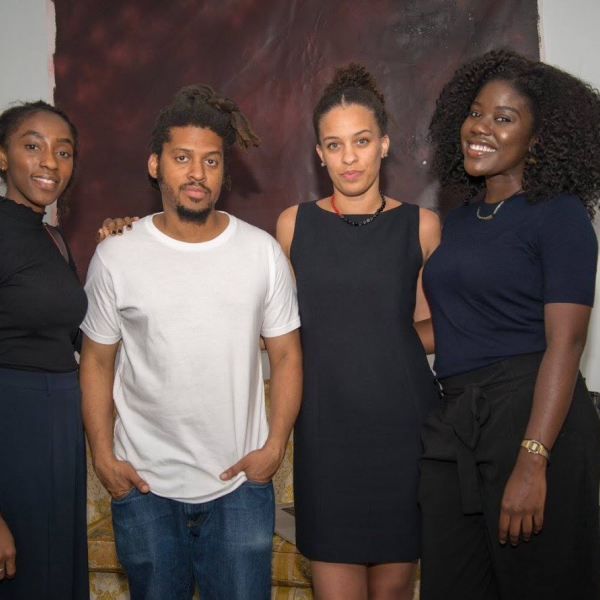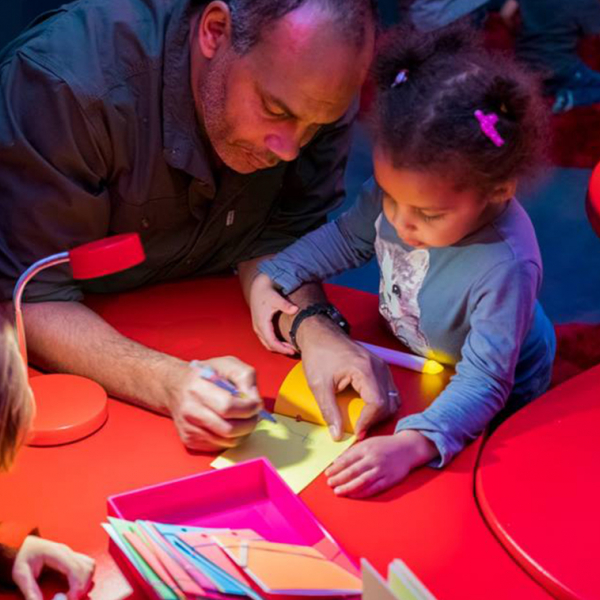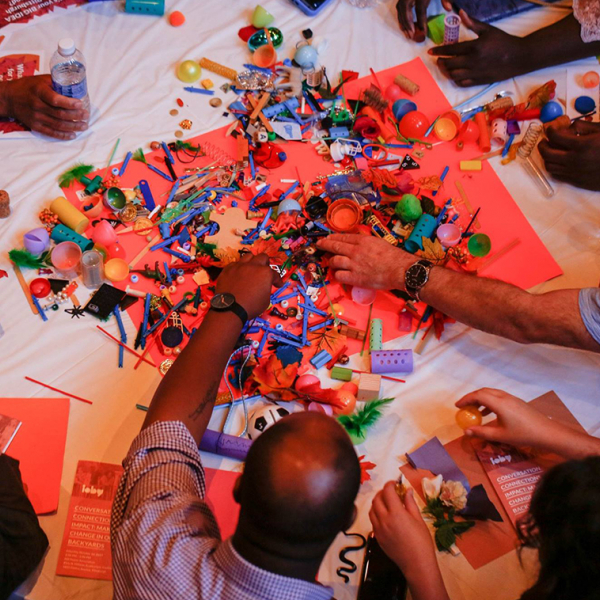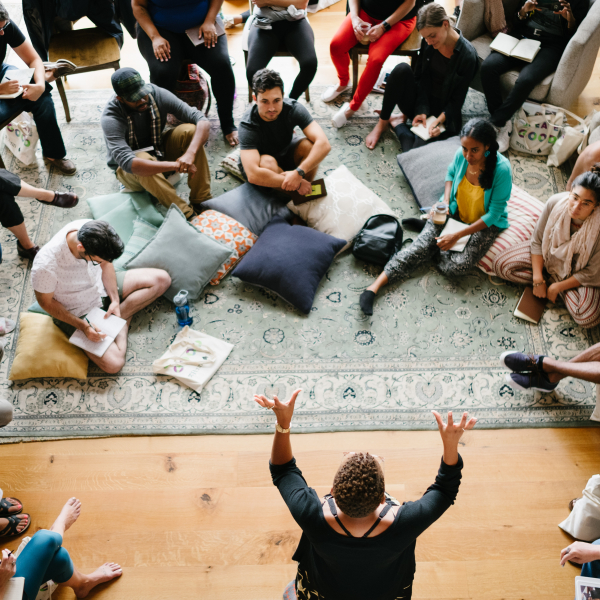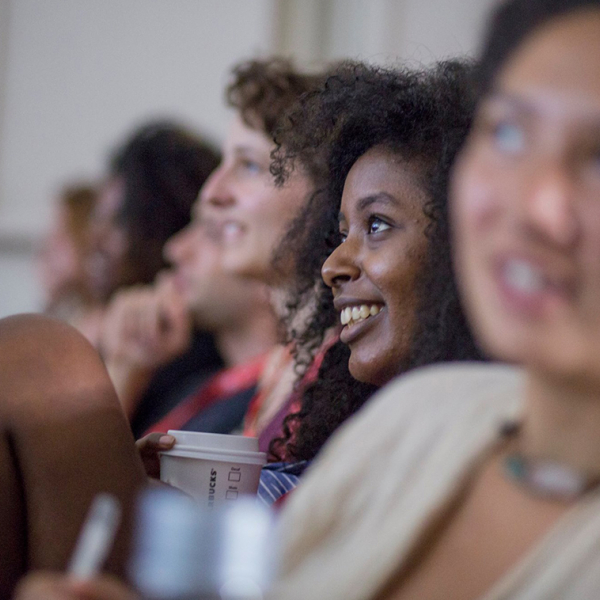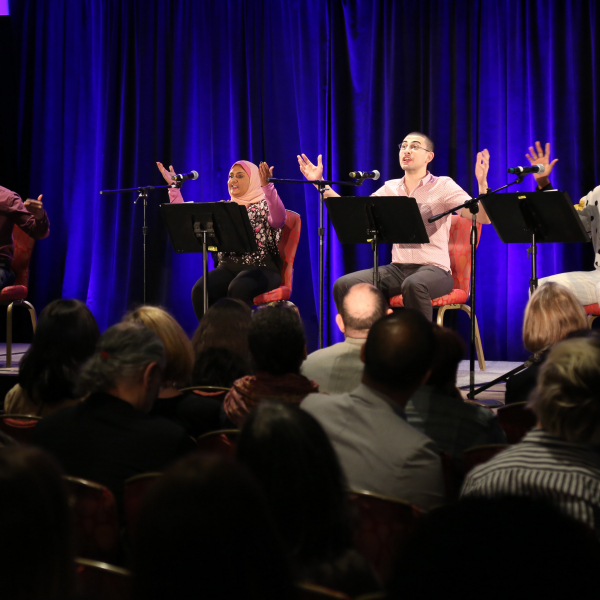The Old Stone Mill Center Of Arts and Creative Engineering in Adams MA, was founded by Leni Fried and Mike Augspurger. Their mission is to create public space for use by the creative community, including a center for re-use of materials diverted from the waste stream; art spaces and a machine shop with equipment and tools available to those who cannot afford to fully outfit their own studios; and to provide space for community members to come together to learn and experiment in arts and technology.
03.05.18
Most nights, the streetlights that illuminate Ashland, Massachusetts, are a uniform white. They shine down on typical small-town things: families getting dinner on Main Street, kids bicycling home from each other’s houses. But for a month in the summer of 2016, nighttime Ashland looked a little different. The town hall and its parking lot were tinted in green. The area around the Historical Society was bathed in purple. Around twilight, a group of people wearing all white might have walked through, clutching blank maps and handfuls of crayons and following a man with a determined expression.
01.05.18
“Your designs are beautiful, but they are empty.” I stood there—stunned—in my faculty advisor’s office. I had never heard anyone give me that criticism. I didn’t know how to respond. I was too Canadian to storm out dramatically, but too shallow to cry. “You need to learn the science behind what you are designing, and make sure it works. Take some hydrology and geology courses. Make science beautiful.” Now I understood. And with my ego and emotions in check, I got to work.
20.04.18
Creative placemaking has been an ongoing discussion in cities and towns across the country for several years, but where do planners sit in this dialogue? What role does a planner have in the development of a creative placemaking strategy? How can planners incorporate creative placemaking ideas into their projects? Or encourage communities to implement these kinds of projects? As a national leader and the professional association for planners, the American Planning Association knows that tools are needed to help planners to address these questions and more.
18.04.18
There’s a lot to love about creative placemaking. When urban planning and development initiatives position arts and culture on par with housing, transportation, and other human necessities, they are better poised to improve a community’s quality of life holistically. Yet what’s sometimes lost in all the excitement over ‘making’ a place is the fact that the place was already there: a place with people, spaces, and culture all its own. That’s why good placemaking projects—especially those happening in marginalized neighborhoods—start with preserving, strengthening, and representing the good things that already exist in it.
12.04.18
In the world of creative placemaking, we often find ourselves talking about housing in terms of “units.” Discussions frequently center around how many housing units a particular organization has built, or we may use the number of “units” available as a measure of success. But it’s important that our language doesn’t become distanced from the core of what we’re truly talking about: creating affordable homes for those who need them.
05.04.18
The Firefly Trail was one of ioby’s largest-budget projects to date. Learn how its leaders leveraged their ioby campaign to bring even more good change to their community. In the spring of 2017, ioby Leader Ivette Lopez Bledsoe led her fellow Firefly Trail board members in raising over $62,000 on ioby for the trail’s Model Miles Project. An effort to build a 39-mile multimodal rail trail from Athens to Union Point, Georgia, had been afoot for at least the past 10 years, but progress was slow. The Board realized that raising funds for “Model Miles” in the communities of Athens, Maxeys, and Union Point would help move the project forward. Then, the board saw a rare opportunity that promised to transform the trail-creation process.
03.04.18
Across New England, there are creative people working to make their communities better for everyone. Creative Community Fellows links artists, community organizers, urban planners, arts administrators and cultural entrepreneurs across New England, creating a community of practice that holds Fellows accountable and helps them take their work to the next level. All are united by their integration of arts and culture into positive community change strategies. Fellows are driven by their desire to connect and exchange with one another and a love for the places they call home. Does this sound like you? Applications for Creative Community Fellows: New England are now open.
27.03.18
Places are defined not only by geography, but by the stories we tell about them. The design of physical spaces reflect and re-inscribe narratives of power, belonging, and access. For this reason, creative placemaking and place-keeping activities that seek to transform relationships of power and expand collective imagination of what kind of world is possible, must integrate multimedia strategies into their work.
26.03.18
Each year, a handful of themes arise out of our ArtPlace Summit–usually they’re the topics around which our dinner conversations revolve, the discussions that seem to find their way into every plenary conversation and breakout session. Last year, we spent a lot of time talking about the importance of storytelling as a mechanism for social change. But it wasn’t until a plenary on the second day of the summit titled “One Wants A Teller In A Time Like This,” that we were able to actually experience the power of storytelling together.






